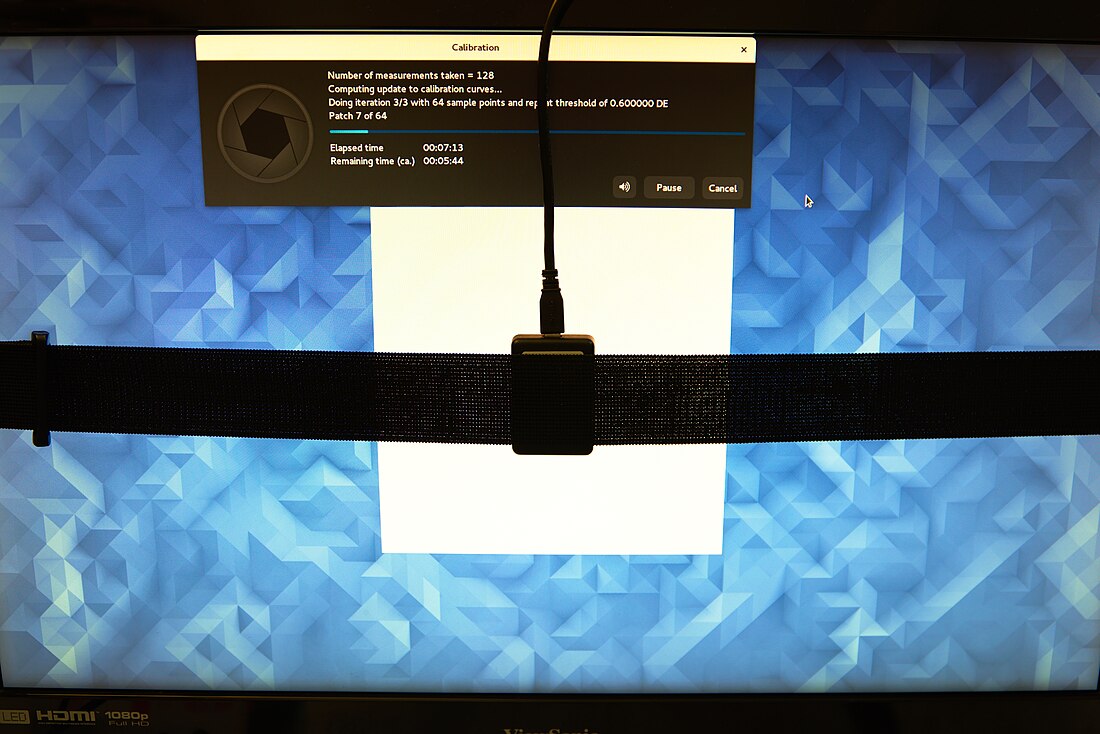Tristimulus colorimeter
Device to measure color values From Wikipedia, the free encyclopedia
A tristimulus colorimeter, colloquially shortened to colorimeter or colourimeter, is used in digital imaging to profile and calibrate output devices. It takes a limited number of wideband spectral energy readings along the visible spectrum by using filtered photodetectors; e.g. silicon photodiodes.[1]

A colorimeter with the known value of absolute error allows measuring (x,y)-chromaticity coordinates in red, green, blue and white colors. Measured values are used for calculation of LCD profile coefficients.[2]
Originally, three glass filters whose transmittance spectra mimicked the CIE color matching functions (shown below) were employed.[3] A filter bank may be used to decompose the individual color matching functions if more accuracy is desired.[4]
A camera or colorimeter is said to be colorimetric if it satisfies the Luther condition by Robert Luther (1868–1945) (also called the "Maxwell–Ives criterion"),[5] reducing observer metamerism color errors, if the product of the spectral responsivity of the photoreceptor and the spectral transmittance of the filters is a linear combination of the CMFs.[6]
A colorimeter or a digital camera with a color filter array can, under certain conditions, be used as an alternative to a spectrophotometer.[7][8]
The illuminant and observer conditions should be specified when citing a measurement (e.g. D65/10°).[9]
The quality of a colorimeter may be assessed using the means in CIE publication 179:2007.[10]
There are various calibration methods for tristimulus colorimeters.[11]
- Color sensor of a colorimeter
- The CIE 1931 XYZ color matching functions
References
Wikiwand - on
Seamless Wikipedia browsing. On steroids.


